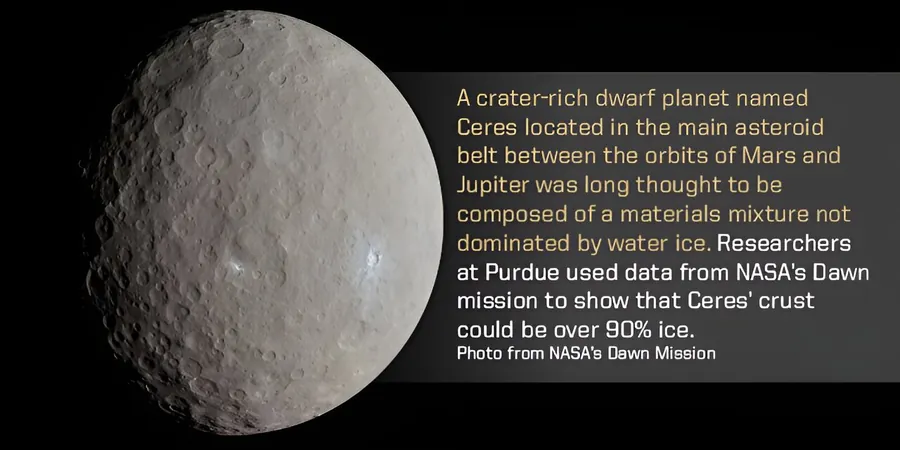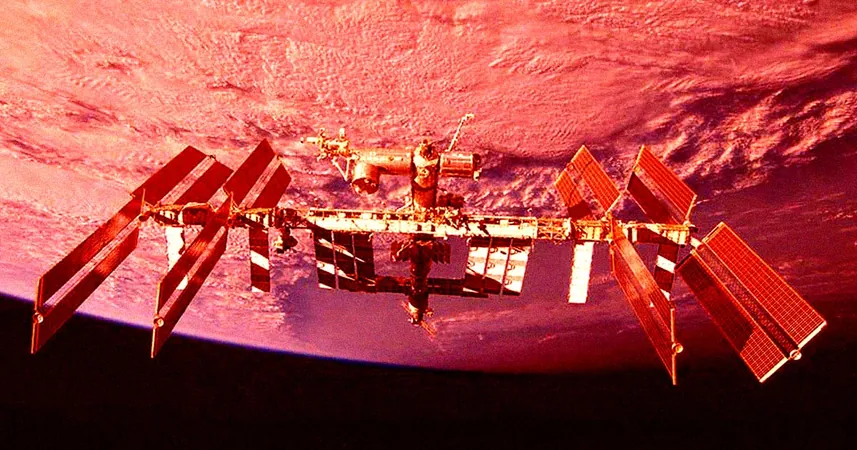
Asteroid Ceres: From Ocean World to Icy Enigma – What New Research Reveals!
2024-09-28
Introduction
Since its discovery in 1801 by Giuseppe Piazzi, Ceres has captivated the attention of astronomers and planetary scientists alike. As the largest object in the asteroid belt, it boasts a heavily cratered surface that has long led researchers to speculate about its icy composition. The prevailing view held that the observable impact craters indicated a more arid, less icy world, but groundbreaking new research is turning that assumption on its head!
New Research Findings
According to a team from Purdue University and NASA's Jet Propulsion Laboratory (JPL), Ceres is likely not just icy but may once have been a 'muddied ocean world'. The research, led by Ian Pamerleau and Mike Sori, reveals that the crust of Ceres could be composed of as much as 90% ice, a staggering increase from the previously accepted notion of only 30% ice content.
Methodology
Using advanced computer simulations, the researchers studied how Ceres' craters have evolved over billions of years. "Our findings suggest there’s a significant presence of water-ice near the surface," explained Sori. "What we’ve learned challenges the belief that ice would deform easily over time. Instead, we've established that with a little mix of solid rock, ice is stronger under Ceres's unique conditions than previously believed."
Implications of Findings
This discovery implies that the surface features of Ceres can be explained by the presence of a more robust icy crust, rather than a dry, dynamic one. The research suggests that Ceres may have once had a 'muddied ocean' akin to Europa—a moon of Jupiter—before it gradually froze and formed the icy crust we observe today.
New Insights on Ice Flow
The team's simulations have uncovered a new way that ice can flow on Ceres, even with minimal rock impurities. They demonstrated that despite the lack of shallow, relaxed craters seen on the surface, an ice-rich crust could still maintain its structural integrity over billions of years.
Significance for Planetary Science
The implications of this research extend far beyond Ceres itself. Sori, who specializes in planetary geophysics, is interested in how this knowledge may alter our understanding of other bodies in our solar system. "Understanding Ceres is crucial," he said. "It's not merely a diminished asteroid; it's a planetary body with surprising characteristics, resembling a planet in many respects, including its 950-kilometer diameter and surface features like craters, volcanoes, and landslides."
Insights from NASA's Dawn Mission
Launched in 2007, NASA's Dawn mission was a pivotal spacecraft that orbited Ceres between 2015 and 2018. The data collected during this mission has fueled this new understanding of Ceres, providing crucial spectrographic and topographical insights that hint at a considerable amount of ice beneath its surface.
Conclusion
As we continue to unravel the secrets of Ceres, one thing is clear: this dwarf planet is more than just a frozen relic of the asteroid belt; it holds the potential keys to understanding the history of water in our solar system. Could Ceres have once harbored conditions capable of supporting life? As scientists delve deeper, the icy mysteries of this intriguing world may just be the tip of the iceberg!









 Brasil (PT)
Brasil (PT)
 Canada (EN)
Canada (EN)
 Chile (ES)
Chile (ES)
 España (ES)
España (ES)
 France (FR)
France (FR)
 Hong Kong (EN)
Hong Kong (EN)
 Italia (IT)
Italia (IT)
 日本 (JA)
日本 (JA)
 Magyarország (HU)
Magyarország (HU)
 Norge (NO)
Norge (NO)
 Polska (PL)
Polska (PL)
 Schweiz (DE)
Schweiz (DE)
 Singapore (EN)
Singapore (EN)
 Sverige (SV)
Sverige (SV)
 Suomi (FI)
Suomi (FI)
 Türkiye (TR)
Türkiye (TR)